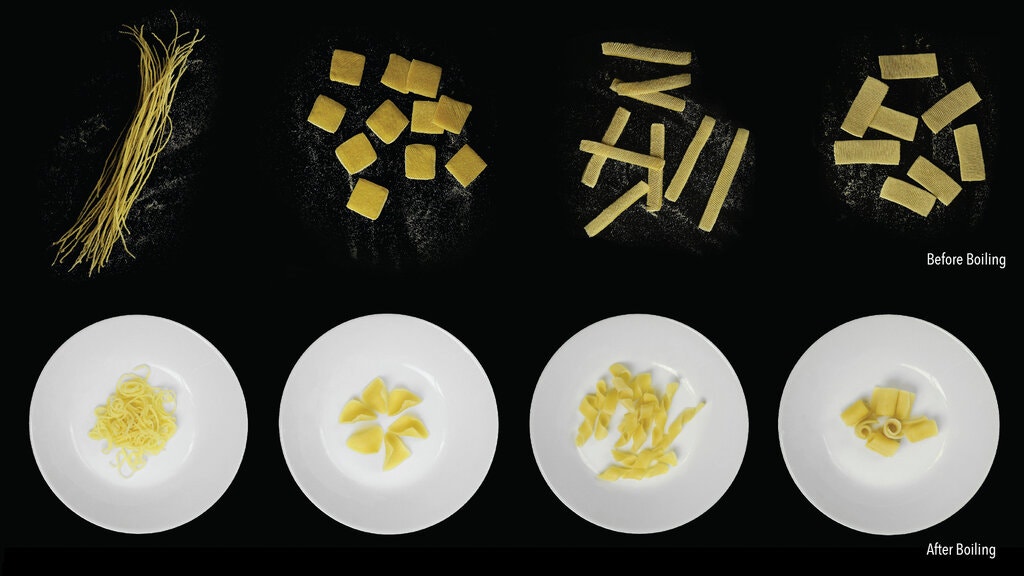
How do You Like Your Pasta?
Everyone has a favourite shape of pasta. Shaped and dried pasta types such as spaghetti, fusilli, penne, or conchiglie all appeal to the eye as well as the palate, especially in pasta dishes for kids. Researchers from the Morphing Matter Lab at Carnegie Mellon University have developed a pasta that is produced in standard flat form, which can take various familiar shapes when it starts cooking in boiling water. And if you are to ask why; these flat kinds of pasta, each with the same standard size, make it possible to cut back on packaging, thus reducing the carbon footprint associated with transport and storage as the packages take up considerably less space. In addition, the time and energy needed for cooking are –possibly- also reduced.
These wonders of design, which look and taste like traditional pasta, are made of only semolina flour and water. The trick is, tiny grooves are stamped into the dough during their production, which allows them to morph into different shapes when cooked. Researchers state they were inspired by flat-packed furniture, which you can buy in disassembled forms packed in flat boxes. Thus, they wondered whether the shape-shifting material technology they were already working on could allow them to produce similarly packaged pasta. Probably on an empty stomach!
When they stamped patterns on the slices of flat pasta, they saw that the time it takes for these areas to cook in boiling water was slightly increased. When these very thin cuts or grooves are processed onto fresh pasta in certain patterns, they enabled the slices to change shape in particular ways. Of course, before that, they developed a computer model to examine how heat and water would affect the gluten and starch in the dough, and thus how various groove patterns could result in certain shapes when the pasta was cooked. “It’s more complex than just swelling,” says Dr. Teng Zhang, a co-author of the study.
Of course, this technology has the potential to benefit various scientific fields, beyond just pasta production. The laboratory, which conducts the research, has already been carrying out a number of studies on plastic, rubber, textile, and food products for years. In theory, it is possible to mould any material that has swelling properties. Researchers also enabled silicone layers called PDMS to change shape in the same fashion. An approach that has great potential particularly for biomedical devices and soft tissue robot technology.
The way to everyone’s mind is through their stomach. Explaining science to people through food is a fun and very successful method. Plus, saving space can be beneficial in many aspects including food transport to natural disaster areas, food storage for astronauts on space stations with severe space constraints.
Another point that researchers point out is that these kinds of pasta should not be cooked for more than seven minutes, or they lose their form. Good news for al dente lovers!
[/vc_column_text][/vc_column][/vc_row]
REFERENCES
- 1. https://techxplore.com/news/2021-05-pasta-morphs-cooked.html
- 2. https://www.nytimes.com/2021/05/05/science/pasta-3d-flat.html
